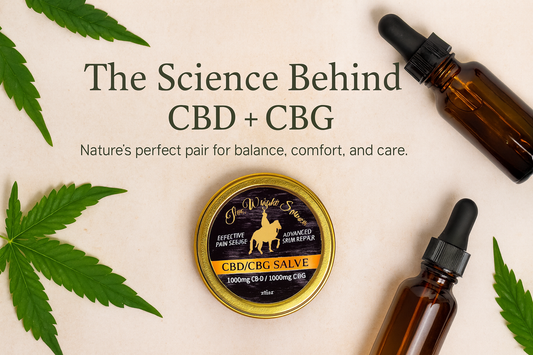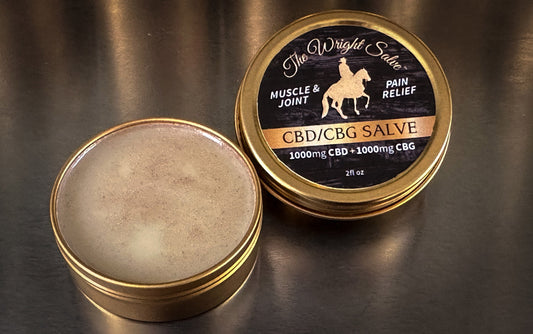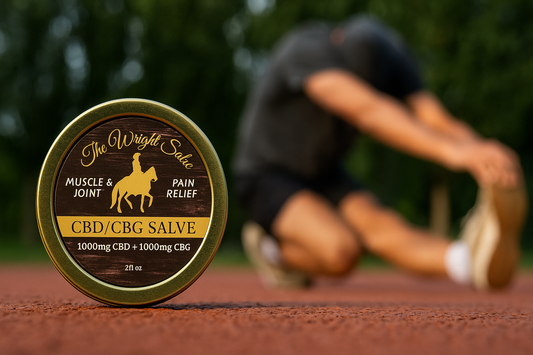Muscle and joint discomfort is something almost everyone experiences at some point. Whether it is from a tough workout, long hours at work, or the natural effects of aging, aches and stiffness can affect our daily routines. Many people turn to natural solutions to find comfort and support without relying only on conventional products.
In this guide, we will explore the most recognized natural approaches to soothing muscle and joint discomfort, including plant-based ingredients, topical remedies and lifestyle practices.
Why Consider Natural Solutions?
People are becoming more interested in natural solutions because they often provide a holistic approach to comfort. Natural botanicals, oils, and extracts are generally appreciated for:
- Soothing effects on tired muscles and joints
- Supporting skin hydration and rejuvenation
- Complementing wellness practices like stretching, massage, and mindfulness
- Offering multi-purpose benefits for both body and skin
Unlike single-use conventional products, natural remedies often bring a combination of aromatic, sensory, and skin-nourishing qualities.
Key Natural Ingredients for Muscle and Joint Support
1. CBD (Cannabidiol)
CBD, a non-intoxicating compound found in hemp, has gained significant attention for its potential to support relaxation, ease discomfort, and balance the skin. Research suggests that CBD interacts with the body’s endocannabinoid system (ECS), which is involved in maintaining balance in many bodily functions, including how we perceive discomfort.4
When used in a topical formula, CBD does not enter the bloodstream but may interact with ECS receptors in the skin, providing localized support.7
2. CBG (Cannabigerol)
Known as the “mother cannabinoid,” CBG is the precursor from which other cannabinoids like CBD and THC are synthesized. Although less studied, it has been investigated for calming and skin-supportive properties.3 When paired with CBD, it creates a synergistic effect, so it can be combined both for enhanced topical comfort.
3. Dragon’s Blood Resin
Derived from the sap of Croton lechleri and other plants, Dragon’s Blood resin has been traditionally used in natural wellness practices. Modern research highlights its antioxidant-rich composition and ability to support the skin’s natural barrier and resilience.5 For topical formulas, this makes it valuable for nourishing and protecting the skin while soothing areas of discomfort.
4. Frankincense Essential Oil
Frankincense, distilled from the resin of Boswellia trees, is one of the most prized botanicals in both historical and modern self-care. For centuries, it has been used in spiritual rituals, incense, and natural skincare. Its woody, resinous aroma with citrus undertones provides a grounding and calming sensory experience, which is one reason it continues to feature prominently in aromatherapy and natural wellness today.
From a chemical perspective, frankincense oil is rich in monoterpenes such as α-pinene and limonene, along with sesquiterpenes and diterpenes. These compounds are recognized for their antioxidant potential and ability to help the skin feel refreshed and balanced.1 In cosmetic applications, this means frankincense is often used to:
· Support the look of toned and rejuvenated skin
· Complement balms, serums, and mists with its calming aroma
· Balance heavier ingredients like butters and waxes by adding a light, uplifting scent
Formulators often pair frankincense with other oils like myrrh because together they round out the aromatic profile, providing depth and longevity to the fragrance. In topical products, frankincense contributes to both the aromatic sophistication and the skin-conditioning qualities of the blend.
5. Myrrh Essential Oil
Myrrh essential oil comes from the resin of Commiphora myrrha, a small thorny tree native to the Middle East and parts of Africa. Known for its deep, balsamic, and slightly spicy aroma, myrrh has been valued since antiquity for both perfumery and apothecary uses. In ancient cultures, it was commonly combined with frankincense in ceremonial rituals, a tradition that continues in some wellness practices today.
Chemically, myrrh contains sesquiterpenes and furano-sesquiterpenes, which contribute to its antioxidant potential and its reputation for soothing the appearance of stressed or irritated skin.2 In cosmetics, myrrh is often included for:
· Adding a comforting, grounding base note to topical products
· Enhancing the feeling of skin resilience and nourishment
· Supporting a balanced aromatic arc when blended with brighter oils like citrus or tea tree
Because of its depth, myrrh helps anchor lighter volatile oils, making formulations feel more luxurious and long-lasting.
6. Tea Tree Essential Oil
Tea tree oil, extracted from the leaves of Melaleuca alternifolia, is one of the most widely studied essential oils in the world. Its crisp, camphoraceous scent is instantly recognizable, and its reputation as a clarifying and refreshing oil makes it a common ingredient in both skincare and haircare products.
Its primary active compound, terpinen-4-ol, is linked to much of its surface-cleansing and skin-refreshing potential.6 Tea tree oil is popular in cosmetic products designed to cleanse, deodorize, and refresh the skin.
In topical self-care, tea tree oil is appreciated for:
· Adding a fresh, clarifying feel to balms, toners, and cleansers
· Supporting a sense of skin purity and refreshment after application
· Pairing well with grounding oils like frankincense and myrrh, creating a balanced aromatic blend
Because it is potent, tea tree oil is typically used in low, safe concentrations within cosmetic products. It can complement the soothing and nourishing qualities of other ingredients, offering a refreshing layer that enhances the overall sensory experience.
7. Botanical Oils and Butters
Carrier oils like jojoba oil, cacao butter, and MCT coconut oil provide the foundation for topical products. These ingredients are rich in fatty acids that help nourish, soften, and hydrate the skin, ensuring that active botanicals like CBD and essential oils are delivered smoothly and comfortably.
Topical Approaches: Why They Work
Topical products are popular because they allow users to apply comfort directly where it is needed. Unlike ingestible options, salves and balms work at the skin’s surface and are often combined with massaging application, which itself can help with circulation and relaxation.
A topical product with cannabinoids and essential oils can deliver multiple layers of support:
- Moisturization and nourishment from plant butters and oils
- Aromatherapeutic comfort from essential oils
- Targeted soothing from cannabinoids like CBD and CBG
Together, these elements create a multi-sensory experience that feels both restorative and luxurious.
Lifestyle Practices That Pair with Topicals
Natural topical remedies work best when combined with supportive lifestyle practices, such as:
- Stretching and mobility exercises: Keep muscles and joints flexible
- Warm baths with Epsom salts: Add relaxation and help loosen stiffness
- Gentle massage: Enhance circulation and allow salves to absorb effectively
- Rest and mindfulness: Reduce stress, which can contribute to tension
By combining lifestyle practices with topical care, individuals can create a comprehensive routine that addresses both body and mind.
The Wright Salve: A Natural Solution
The Wright Salve Co. has created a flagship product designed with powerful plant-based ingredients that complement each other for topical comfort.
The Wright Salve
· 1000 mg CBD + 1000 mg CBG for synergistic support
· Dragon’s Blood resin for antioxidant-rich skin nourishment
· Frankincense and Myrrh essential oils for calming and grounding aromatics
· Tea Tree essential oil for refreshing the skin’s feel
· Botanical butters and oils (cacao butter, jojoba oil, MCT coconut oil) for smooth application and hydration
· Colloidal gold for luxurious texture and optical radiance
This formula was crafted to soothe tired muscles and joints, nourish and rejuvenate skin, and provide a grounding sensory experience.
Safety Considerations
Natural does not always mean risk-free. Essential oils and plant-based compounds are potent, so it is important to:
- Perform a patch test before full use
- Avoid contact with eyes or mucous membranes
- Store products in cool, dry places to preserve freshness
- Consult with a healthcare professional if pregnant, nursing, or managing medical conditions
When used mindfully, natural products can be a safe, effective addition to self-care routines.
Conclusion: Choosing a Natural Path for Comfort
Muscle and joint discomfort is part of life, but finding relief does not have to rely solely on conventional options. By turning to natural solutions like CBD, CBG, Dragon’s Blood resin, and essential oils, individuals can support their body’s sense of ease while also nourishing their skin.
Topical products like The Wright Salve bring together ancient botanicals and modern innovation to create a holistic approach to comfort. They offer more than just relief; they offer a ritual of care that restores both body and spirit.
For those looking to combine effectiveness with natural elegance, The Wright Salve Co. provides formulas designed to meet your needs and elevate your daily self-care routine.
References
- Almeida-da-Silva, C. L. C., et al. (2022). Effects of Frankincense Compounds on Infection and Inflammation. Molecules. https://doi.org/10.3390/molecules27217212
- Batiha, G. E. S., et al. (2022). Commiphora myrrh: A phytochemical and pharmacological review. Frontiers in Pharmacology. https://doi.org/10.3389/fphar.2022.1016911
- Borrelli, F., et al. (2013). Colon carcinogenesis is inhibited by the TRPM8 antagonist cannabigerol. Biochemical Pharmacology, 85(9), 1306–1316. https://doi.org/10.1016/j.biocel.2013.02.008
- Bruni, N., et al. (2018). Cannabinoid delivery systems for pain and inflammation treatment. Frontiers in Pharmacology, 9, 1259. https://doi.org/10.3389/fphar.2018.01259
- Cai, Y., Luo, Q., Sun, M., & Corke, H. (2004). Antioxidant activity and phenolic compounds of 112 traditional Chinese medicinal plants. Life Sciences, 74(17), 2157–2184. https://doi.org/10.1016/j.lfs.2003.09.047
- Carson, C. F., Hammer, K. A., & Riley, T. V. (2006). Melaleuca alternifolia (Tea Tree) Oil: A Review. Clinical Microbiology Reviews, 19(1), 50–62. https://doi.org/10.1128/CMR.19.1.50-62.2006
- Palmieri, B., Laurino, C., & Vadalà, M. (2019). A therapeutic effect of CBD-enriched ointment in inflammatory skin diseases and cutaneous scars. La Clinica Terapeutica, 170(2), e93–e99. https://doi.org/10.7417/CT.2019.2116




